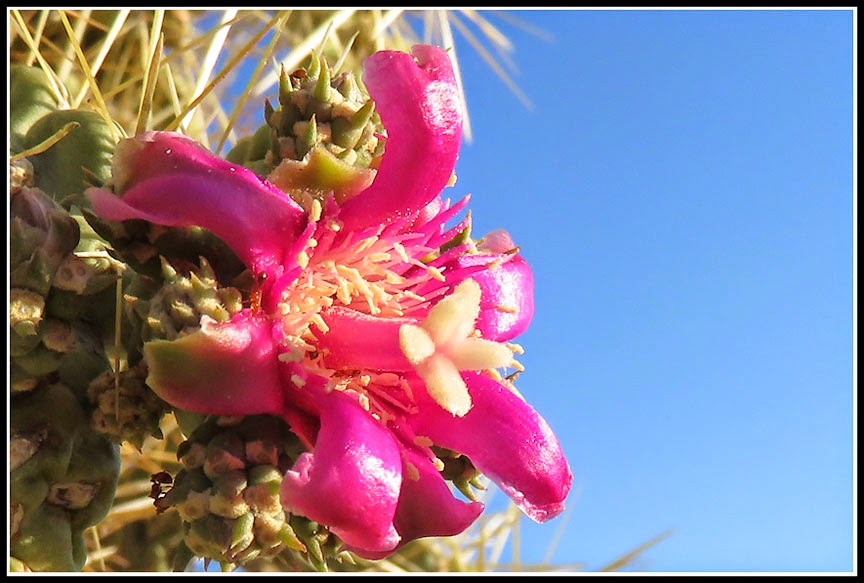The raven perched atop a saguaro was the start of the hike. The raven tolerated one photo and then took flight.
The jack rabbit also cooperated for a few photo poses.
Then I found something most unusual. A prickly pear growing out of the crotch of a saguaro. Growing from a seed in some debris in the crotch, the prickly pear didn't look in great shape. Depending on a little moisture in the crotch of saguaro has to be a tough living. Guess the prickly pear hasn't evolved to set a root into the saguaro to become a parasite.
Since many of my recent posts include a photo of saguaros, how about an unusual crested saguaro with some blooms.
A decades long hiking habit has been observing footprints on the trails. Were the prints from today or were they from a previous day. The size of the footprints and the depth of the impression allows me to surmise and make guesses about other hikers on the trail. Many times I have been able to confirm my thoughts about the hikers from sizes to weights to sex. Those experiences have made me a better tracker.
On a recent hike, I saw this print. My first reaction was a hiker walking on the sole of his foot and had no heel.
When I noted a couple of foot prints from horse shoes, I decided this must be the print from barefoot shoes for a horse. I had seen horses with barefoot shoes on previous hikes. This particular horse appeared to have the barefoot shoes only on the rear. Is that possible.
This is a barefoot horse shoe modeled by a horse. (Found on the internet.)
That was enough learning for another day and then back home before nine after the four to five mile hike.
Did I mention that Tucson is warming up. 100 degree days are a daily event. That heat is an incentive to be on the trail before six and before the sun has risen over the Rincon Mountains.































